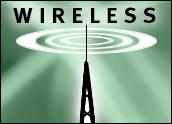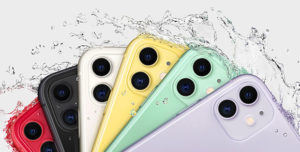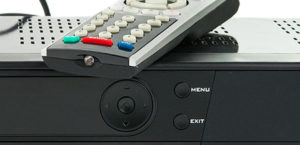
Now that the Department of Justice said no to the AT&T, T-Mobile merger, can we please start talking about solving the real — and growing — problem in the wireless industry?
It’s something that will affect every carrier and every customer in the years to come. In fact this is the very reason AT&T wanted T-Mobile in the first place: the spectrum shortage.
As my Pick of the Week, I’ll consider whether the Apple iPhone will be available as a prepaid device on smaller networks.
Short-Term Plan
AT&T wanted to merge with T-Mobile to solve its own capacity problem. It wanted to get its hands on T-Mobile spectrum. The rest was just noise. Still, that would have been only a temporary fix at best.
So why does AT&T need T-Mobile’s spectrum? Doesn’t it have its own? Sure, but remember all the terrible stories about the quality of AT&T Mobility’s wireless data network over the last few years? It simply doesn’t have enough. No one does.
The reason is that during the last few years, smartphones like the Apple iPhone and the many devices running Google’s Android OS emerged, and wireless data traffic grew like crazy. This problem jumped up and bit AT&T in the rear end.
Suddenly, so many people were sucking so much data that the network could not handle it, due to spectrum shortage. Spectrum is like the size of the hose. We need a wider hose carrying more data for more customers.
A couple good things are suddenly happening that may give us a little time to solve this increasing problem. However, if we don’t, then every carrier and every customer will be faced with the same problem that’s confronting AT&T.
It’s noteworthy that many of the terrible stories about AT&T Mobility’s quality seemed to fade away in the last few months. Why?
Perhaps Verizon Wireless starting to sell the iPhone in the spring has something to do with it. If so, then Sprint Nextel selling the iPhone later this fall will give AT&T even more breathing room, at least temporarily.
That’s the good news. However, that reprieve will only last a short while before the exploding smartphone and wireless data growth catches up.
Then every carrier and every customer will suffer the same way — just like in the 1990s, when America Online had a problem keeping up with demand and slowed the Internet to a crawl as more customers signed up.
After all, that’s why AT&T announced its plan to merge with T-Mobile this spring at CTIA. At that time, the company was taking it on the chin with all the wireless data problems its customers were experiencing. It couldn’t get ahead of the demand curve.
In the months since, the frenzy has calmed down. We have a little time to solve this problem. However, it will not be solved with mergers. That’s only a bandage, and the box is almost empty. We have a broken bone that needs to be set.
The acquisition of T-Mobile would solve AT&T’s immediate problem, but it would not touch the larger, industry-wide problem.
Now that the government has said no to the merger, AT&T should back away and join with other carriers to focus on solving the larger industry problem.
One Big Pool
What solutions are there? Here are two ideas.
The first one has to do with the spectrum the companies each own. Several years ago, when the smartphone industry was young, the U.S. government thought it would be a smart idea to auction off the spectrum. It raised billions of dollars, and everyone was happy.
Then the Apple iPhone and was born, followed by Google’s Android OS, and that changed everything we thought we knew about the smartphone segment. Suddenly there was enormous data usage burdening the wireless networks. The number of apps grew from a few hundred to a few hundred thousand in just a few years. Incredible — but a price had to be paid.
Suddenly, the smartphone solution was not so smart. Bottlenecks occured. There was too much demand and too little spectrum.
If we are to survive, we have to come up with a bold solution. A wider hose. Otherwise the entire industry will face the same problems AT&T has been dealing with in recent years.
So one idea is to take the spectrum back and pool it into a large group. Let every carrier and handset maker access it all. That way if one band is blocked because of heavy usage, the phone and the network can simply use another band. Simple solution.
LightSquared’s Struggle
A second idea is something a new company is trying to do. LightSquared is building a wireless data network and will sell capacity to smaller wireless carriers. That would give smaller companies like Cellular South, U.S. Cellular, MetroPCS and Tracfone the opportunity to offer the same wireless data services we see on AT&T, Verizon, Sprint and T-Mobile.
In fact, LightSquared could also serve those big carriers, making its network available as backup when things get tight. More spectrum.
Simple as that. Makes sense, right? Then why are the big guys trying to put LightSquared out of business over the GPS issue?
That’s exactly what the big carriers are doing, LightSquared founder Phil Falcone said in an interview on CNBC. It makes absolutely no sense.
It’s time to solve this serious problem. Build a solution already. Enough of these stupid games. We have an industry at risk, damn it. The future of wireless data is at stake.
There must be plenty of other ideas in the marketplace as well. Now is the time to start having this discussion and solving this problem — before it jumps up and bites us all in the rear end, just like it bit AT&T over the last few years.
After all, the question is simple: Do we all want to face the same problems experienced by AT&T and its customers? Or do we want to be mature and solve this growing problem?
That should be our industry-wide call. It’s time to come together to solve this problem. Then we can all win. Otherwise we will all lose and pay a terrible price.

My Pick of the Week: Will the Apple iPhone go prepaid on the smaller networks? I am convinced the answer is yes — let me explain why.
The iPhone was such an exclusive device when it was born several years ago. It was available only for the AT&T network.
However, earlier this year, Verizon Wireless began offering the iPhone. This fall, Sprint Nextel will be selling it. T-Mobile is the only other major carrier left.
As the price continues to drop on earlier iPhone models, it’s becoming affordable for even more customers, especially if they can sign up for a low-cost monthly plan.
The prepaid segment is strong and growing. So this is a natural evolution of the product.
I expect the iPhone to be sold as a prepaid offering by the big carriers, and then by the smaller networks as well — like MetroPCS, Tracfone, U.S. Cellular, Cellular South and so on.
After all, we are already seeing prepaid Android devices becoming available from these smaller carriers.
The only problem this raises is whether some of these smaller networks are capable of handling the massive volume of wireless data that comes with these super-smartphones.
That makes this an opportunity for Apple — and it’s not likely it will let it pass by. It’s not a question of if, just when.













































A cheaper prepaid version of the iPhone for Tracfone wireless?! That’s brilliant. My grandfather is going to love replacing his basic SVC senior phone for the chance of getting to play with a real toy (yes, no matter how old you are, boys still love their toys). But is that really realistic? I’ll be the first to say there’s an ocean of expansion available in the low-end prepaid market, but will Apple really compromise their well groomed prestige brand? I don’t think so.
I think if Apple really wanted to reinforce their standing as leaders in innovation, and now availability / affordability too, then they should definitely look at tracfone as an optional channel. Unlike conventional carriers, that are limited to only one type of technology (GSM, or CDMA), tracfone has access to both those types of network – a true world phone. If that the new affordable iPhone could automatically switch between GSM, and CDMA wherever it went, then you would truly have a leader in signal coverage with tracfone.